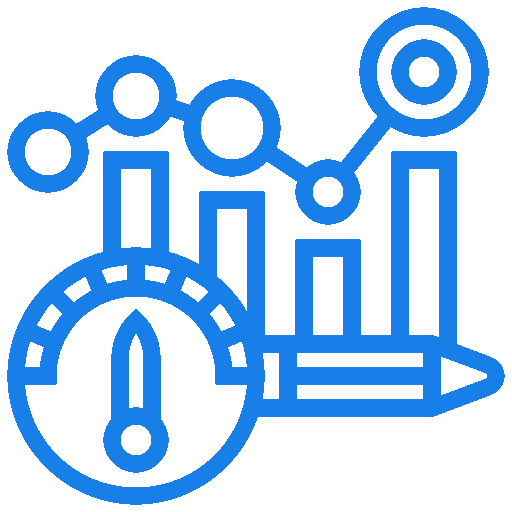AI in Education
AI TRANSFORMS EDUCATION INDUSTRY
The use of Artificial Intelligence in education is revolutionizing the industry. AI has transformed both its goal and method. The use of AI for education made it possible to teach students according to their aptitude. As a result, the focus of education shifts from test scores to quality improvement. Data science for education provides personalized solutions for students, which take into account their situations and needs.
AI for education has restructured the whole education process. It plays a significant role in teaching and freeing up human resources. Moreover, Artificial Intelligence in education uses Big Data to facilitate decision-making. Thus, precision teaching becomes possible while learning speed and flexibility improve. On top of this, AI for education also boosts the flow of information within the educational industry. In addition to this, resources can be shared across different regions more easily.
AI enables personalized learning experiences by tailoring educational content and pacing to each student’s unique needs and abilities. Adaptive learning platforms powered by AI algorithms can assess students’ strengths and weaknesses, providing customized recommendations and interventions.
AI-powered chatbots and grading systems can provide instant feedback to students, helping them understand their performance and make necessary improvements. This timely feedback promotes a continuous learning cycle and empowers students to take ownership of their education.
AI can automate time-consuming administrative tasks such as grading papers, scheduling, and data management. By reducing teachers’ administrative workload, AI frees up valuable time for them to focus on delivering high-quality instruction and engaging with students.
AI technology allows students to access educational resources anytime and anywhere. Online platforms and AI-powered tutoring systems provide opportunities for students in remote areas or with limited resources to receive quality education.
AI tools, such as interactive virtual assistants and gamified learning platforms, can captivate students’ attention and increase their engagement in the learning process. These technologies make education more enjoyable and foster a positive attitude towards learning.
Artificial intelligence can automate basic activities in education
Automation in education is already underway, and its impact can be observed in various aspects of the educational landscape. One notable example is the implementation of automated marking systems for assignments. Singapore’s Ministry of Education has embraced this technology, allowing teachers to automate the grading process for English assignments. By automating this basic activity, teachers can save valuable time and focus on higher-level concepts, such as providing individualized feedback and engaging students in interactive discussions.
Another area where AI automation demonstrates its potential is in adaptive learning systems. These systems leverage machine learning algorithms to assess student performance in real time and adjust learning pathways accordingly. By analyzing data on students’ strengths, weaknesses, and learning preferences, adaptive learning systems can provide personalized education experiences tailored to individual needs. This approach promotes student engagement and enhances learning outcomes by catering to each student’s unique requirements.
AI-enabled learning companions also play a significant role in automating basic activities and supporting holistic learning. These companions act as virtual mentors, providing motivation, reflection, and personalized recommendations to students. By leveraging AI capabilities, learning companions can engage students in interactive conversations, simulate real-world scenarios, and assist with problem-solving. This technology complements the role of teachers by offering additional support, guidance, and individualized attention to students, thereby augmenting the overall learning experience.
The technical aspects of AI automation in education encompass a wide range of techniques and applications. Content analysis studies have explored the integration of AI techniques such as smart learning environments, algorithms, adaptive learning, affective computing, and gamification in educational settings. These studies highlight the use of artificial neural networks, deep learning, swarm intelligence, and IoT technology to enhance the effectiveness of AI in education. Moreover, AI automation can significantly impact administrative tasks, including student enrollment, attendance tracking, and progress reporting, through the implementation of Robotic Process Automation (RPA).
While AI automation offers numerous benefits to education, it is important to recognize that it does not seek to replace teachers. Rather, it aims to enhance their capabilities and transform their roles in the classroom. Teachers will continue to play a critical role in fostering human interaction, providing guidance, and creating meaningful learning experiences that cannot be replicated by AI. AI automation can assist teachers by automating routine tasks like grading and tutoring, freeing up their time to focus on more interactive and personalized teaching methods. The collaboration between teachers and AI can result in a more efficient and effective education system.
Students could get additional support from AI tutors
Educational software offers the flexibility to tailor learning experiences to match the diverse needs and learning styles of students. Through adaptive learning algorithms and intelligent systems, software can assess students’ strengths, weaknesses, and learning preferences. By analyzing this data, the software can then customize content, pace, and instructional strategies to optimize each student’s learning journey. This adaptability promotes engagement, as students are more likely to be motivated when the learning content resonates with their interests and abilities.
Benefits of Adaptive Learning Software:
By aligning the content and delivery methods with students’ interests and abilities, adaptive educational software fosters higher levels of engagement. This engagement stems from the personalized nature of the learning experience, which creates a sense of ownership and relevance.
The adaptability of educational software allows students to progress at their own pace, ensuring mastery of concepts before moving forward. This personalized approach has been shown to improve learning outcomes, as students receive targeted support and reinforcement where needed.
Educational software can provide real-time feedback on students’ performance, allowing for immediate identification of areas that require additional practice or remediation. This prompt feedback loop enables students to address misconceptions and reinforce learning in a timely manner, fostering deeper understanding and retention of knowledge.
Adaptive learning software can offer personalized assistance and resources, providing targeted guidance to students as they navigate their learning paths. This individualized support empowers students to take ownership of their education and build confidence in their abilities.
Technical Aspects of Educational Software:
The backbone of adaptive educational software lies in its intelligent algorithms. These algorithms analyze data collected from students’ interactions with the software to determine their proficiency, learning style, and areas of improvement. Based on this analysis, the software adapts the content and delivery methods to match each student’s needs.
Educational software utilizes data collection techniques to gather information on students’ performance, progress, and learning patterns. This data is then processed and analyzed to generate insights that inform adaptive adjustments in the learning experience. Privacy and security measures must be in place to ensure the responsible handling of student data.
How AI can Solve Education Problems
AI in education market enables personalized learning experiences tailored to individual students’ needs and preferences. Intelligent algorithms analyze vast amounts of data to understand each student’s strengths, weaknesses, and learning styles. With this information, AI-powered educational systems can adapt content, pacing, and instructional strategies, maximizing student engagement and comprehension. Personalized learning paths foster student agency, allowing them to explore subjects at their own pace while receiving targeted support and feedback.
Intelligent Tutoring Systems:
Machine Learning in education industry tutoring systems provide students with personalized guidance and feedback similar to a human tutor. These systems use machine learning algorithms to assess students’ knowledge gaps, offer tailored explanations, and suggest additional resources. The adaptive nature of these systems ensures that students receive the right level of challenge and support, leading to improved learning outcomes.
Data Analytics and Learning Analytics:
AI empowers educators with powerful data analytics tools that can process vast amounts of student data to uncover patterns, trends, and insights. Learning analytics allows educators to identify struggling students, monitor their progress, and provide timely interventions. Predictive analytics models can forecast future learning outcomes, enabling proactive measures to prevent learning gaps. Additionally, AI can automate administrative tasks such as grading, freeing up valuable time for teachers to focus on instructional activities.
Natural Language Processing and Intelligent Feedback:
AI-powered natural language processing (NLP) enables intelligent feedback systems that can evaluate and provide detailed assessments of student work. These systems analyze written responses, essays, or code to provide instant feedback, identifying errors, suggesting improvements, and encouraging critical thinking. NLP algorithms can also facilitate language translation, supporting diverse learners and fostering inclusive education environments.
Data Science For Education Could Change The Role Of Teachers.
Educational Big Data (EBD) has emerged as a valuable resource in education. With characteristics such as volume, velocity, variety, veracity, and value, EBD encompasses diverse data sources, including student records, instructional materials, and classroom interactions. Data science enables educators to analyze this wealth of information, uncover patterns, and derive actionable insights. By employing techniques such as data mining, machine learning, and natural language processing, educators can gain a deeper understanding of student performance, identify learning gaps, and tailor instruction accordingly.
Personalizing Instruction and Enhancing Learning Outcomes:
One of the key ways data science is transforming the role of teachers is through personalized instruction. By analyzing student data, including learning preferences, strengths, and weaknesses, data science algorithms can generate insights that inform the creation of customized learning paths for individual students. This tailored approach to education promotes student engagement, motivation, and mastery of subject matter. Additionally, data science enables the identification of at-risk students at an early stage, allowing educators to intervene and provide targeted support, thus improving overall learning outcomes.
Leveraging Learning Analytics for Continuous Improvement:
Data science empowers educators with learning analytics tools that enable them to gain insights into student progress, engagement, and learning patterns. By analyzing data generated from educational platforms and digital learning resources, teachers can monitor individual and group performance, track the effectiveness of instructional strategies, and make data-informed decisions. Learning analytics also facilitates the identification of trends and patterns across classrooms and schools, allowing for evidence-based policy development and instructional improvement.
Uncovering Hidden Patterns with Advanced Techniques:
Data science techniques, such as machine learning and network analysis, offer new avenues for understanding educational processes and structures. Machine learning algorithms can analyze vast amounts of data to predict student outcomes, recommend personalized resources, and identify potential areas of improvement in instructional design. Network analysis can reveal complex relationships within educational systems, shedding light on social dynamics, knowledge transfer, and collaboration patterns. These advanced techniques empower educators to go beyond traditional data analysis and gain a more comprehensive understanding of the learning ecosystem.
Personalized Learning Made Possible With AI – Potential Use Cases
Personalized and Adaptive Learning
Description: Considering each student’s peculiarities, the educational system can maximize the benefits of learning. Personalized content reckons the needs, previous learning records, preferences, style, and progress. Adaptive learning adjusts to the level of knowledge, fills in gaps, and recommends materials. The vice versa is also possible i.e. if the student already knows a specific topic, the excess content is skipped. Also, some systems ease learning for people with visual, hearing, and speech disabilities.
Influence on business: Traditional one-size-fits-all teaching is ineffective and slow and it does not show the maximum capabilities of students. Machine learning allows for this using advanced personalization and adaptive learning in a few seconds. Personalization makes the learning experience more enjoyable, offers more intelligent content , and fills the gaps by saving time if necessary. The system provides students with information to which they are most likely to react well.
Benefits: Improved course pass rates, engagement, and results. Focus resources on essential tasks, filling gaps in knowledge. A better learning experience boosts ROI.
Complexity: 4 (above average)
Data needed: Students’ needs, goals, and preferences; collected data on activities; time spent; difficulty; evaluation of materials; feedback.
Examples: Course recommendation: Coursera, personalized courses: Duolingo, Querium, Kidaptive, Cognii, adaptive learning: Alta by Knewton, test preparation: Riiid, Nuance – a speech-recognition system for people with writing disabilities.
Automated Assessment and Evaluation
Description: AI can help not only in more effective learning but in teaching as well. One of the crucial but time and labor-consuming teacher’s tasks is checking assignments. Evaluating essays, homework, grading exams, tests, and term papers is a considerable job to handle. Grading allows the student to understand the quality and correctness of the completed work, so the evaluation must be accurate and objective. In addition to simply evaluating, the vital point is providing feedback and plagiarism checking.
Influence on business: Introducing machine learning into the assessment process allows you to automate monotonous and lengthy routine tasks. This can free up a significant amount of time for teachers. This allows them to pay more attention to students, focus on creative work or course improvements. It also makes teaching more effective as teachers have more time to mentor and engage students. Smart grading can evaluate structure, style, detect mistakes, correct them, and check for plagiarism.
Benefits: Automated evaluation systems reduce time, costs, and stress for teachers. They also increase learning and teaching efficiency and give them the ability to put more effort into mentoring and engaging content. In some cases, an AI-based assessment can be fairer and more accurate with plagiarism detection.
Complexity: 2-4 (varies from below to above average), depends on the task and rules for assessing.
Data needed: A collection of previous students’ papers and grades, feedback on them, set of rules for assessing, knowledge database.
Examples: M-Write by the University of Michigan, which analyzes writing assignments and identifies students who need help; Gradescope by UC Berkeley – ML-assisted grading tool; IntelliMetric® – AI-based scoring for written assignments that provides individual feedback, Emma by Unicheck – NLP-based cheating prevention assistant.
Educational Content Improvement
Description. With the active development of digitalization, outdated content formats are no longer relevant. Innovative content aims to ease and customize learning for students. Auto-summarized study guides, flashcards, practical and interactive questions are replacing classic textbooks. Intelligent content systems support many formats: video and multimedia, simulations, games, etc.
Influence on business. Customized digital learning interfaces simplify the learning process and preparation of materials. Textbooks and guides are now digital and can be generated and summarized by AI. Text information can be transformed into easy-to-perceive visualizations and simulations. Materials are timely updated and adjusted to learning paths. AI can detect difficult or less engaging chapters for students based on their feedback.
Benefits: 24/7 access to relevant learning material, better engagement, and perceiving information.
Complexity: 3 (average).
Data needed: A collection of digital lessons, articles, books, and students’ feedback on them.
Examples: Cram101 – An AI-based system for book summarization with extraction of key points. Quizlet – provides the most relevant materials for students. Netex Learning – a complex learning platform with content delivery, media integration, assessments, and gamified experience.
Tracking and Analyzing Students’ Behavior
Description: Tracking student progress is fundamental to effective teaching. Trends in student behavior can state how well learning is aligned with their goals. Also, it shows which topics are the most important and which are hard to understand. Identifying emotions in the classroom can help detect engagement and correct the lecture part that causes negative emotions.
Influence on business: Machine learning algorithms allow monitoring and analyzing student performance. Moreover, based on the data, you can even model it. Identifying the factors affecting performance helps understand the system’s weaknesses and optimize them. Another challenge that monitoring can solve is student retention.
Benefits: Increased student retention and results, course quality improvement.
Complexity: Tracking and analysis – 2 (below average), class mood detection and prediction – 3 (average).
Data needed: Student actions over time. For predictions – structured data with factors that can influence learning.
Examples: Nagarro – a complex AI-based tool with the class-mood tracker. Kidaptive predicts future performance.
Immersive and Virtual Classrooms
Description: The combination of VR, AR, and AI is the future of education. This approach is especially common for foreign language learning or virtual science labs. AI learns and responds to actions taken in this environment, while AR and VR provide immersive and gamified experiences. Using emotion detection, AI can react and guide students if they get confused.
Influence on business. By using all types of information perception, students master the knowledge better. Learning with an AI-teacher becomes less intimidating, and the attitude towards mistakes is more manageable. Students can boost their skills by learning in immersive simulations. Also, all sessions may be available for review and repetition.
Benefits: Increased engagement, interactivity, practical experience, better interaction between teacher and student, and learning outcomes.
Complexity: 5.
Data needed: Students’ actions and reactions, instructions and possible hints from teachers, knowledge database.
Examples: IE WOWRoom – learning space with real-world simulations, expert holograms, big data analysis, and emotion recognition system. Another example is an immersive lab at Rensselaer Polytechnic Institute for Mandarin Chinese studying.
Automated Curriculum Creation and Scheduling
Description: Scheduling is an essential administrative task in education. It helps students and teachers understand where they should be and when considering all the restrictions. With manual compilation, it could take months. Now, with modern software, it is solved faster, but problems of unrecorded preferences and flexibility remain. The challenge of curriculum design is to plan the correct order of courses, lesson planning, and the outcomes that students and teachers are expected to achieve.
Influence on business: Integrating machine learning algorithms allows scheduling classes in a few seconds and checking current learner’s and teacher’s calendars. Such systems help avoid double-booking, simplifies teacher replacements, and assign students by skill, not according to their schedule. This is especially true given the COVID restrictions and the need to limit live contacts between students. AI-based curriculum design provides flexibility to learning paths and detects gaps. Some advanced systems can even recommend useful materials, saving time and costs.
Benefits: Reduced time, avoidance of conflicts in schedule, flexibility, and ease of management
Complexity: 2 (less than average)
Data needed: information about subjects, skills required, expected outcomes, teacher and student preferences and goals, regularly updated progress, and feedback.
Examples: Century Tech – customized system for creating teaching and learning plans, personalized lessons recommendation; Nagarro – an AI-based scheduling tool; Thinkster Math – integrates one-on-one teaching and math curriculum, Vertex Intelligence – scheduling with COVID restrictions.
What clients and partners say about us

Olga Shevchenko
CEO, EVA

Jake Diner
Founder and CEO, Elafris Inc

Oleg Bilozor
CEO and Founder, Reply

Michael Korkin, Ph.D.
CTO at Entropix, Inc.
How to Start Combining AI and Education?
Artificial Intelligence in education is getting increasingly important for this sector. Nonetheless, its full potential is yet to be fulfilled. More and more companies are reaping the benefits of AI for education. If your business plans to pair Artificial Intelligence and education, you should start right now.
Here are several important principles to remember:
- Data is the starting point. The type, quality, and quantity of available data are of prime importance for utilizing machine learning in education. After accessing it, you will get a general idea of your options. Nonetheless, little or no data doesn’t mean you should end your project before even starting with it. You can still succeed in using data science for education. Study available public data sources or search for partners with relevant data. Design your own strategy to collect and store data necessary to utilize machine learning in education.
- Keep your ambitions in check. Your first project of using AI in education shouldn’t be too complicated. Small projects get completed faster. You will be able to build on your first success over time. The use of machine learning in education can be scaled. New capabilities will benefit your institution, and the value will increase.
- Brace yourself for failures. Employing data science for education is a challenging task. Be prepared to devote a lot of time and resources to it. Failure is a part of the way to implementing innovations. It is vital for organizational learning. Don’t be afraid to fail early, and you’ll save time and money.
Benefits Of AI For Students
One of the most significant advantages of AI in education market is its ability to provide personalized learning experiences for students. AI algorithms can analyze vast amounts of data, including student performance, learning preferences, and individual needs. By leveraging this data, AI-powered systems can tailor educational content and instruction to match each student’s unique requirements. This personalized approach allows students to learn at their own pace, focus on areas where they need improvement, and explore their interests. Whether it’s adaptive learning platforms or Machine Learning in education industry, students can benefit from customized learning paths that enhance engagement, motivation, and knowledge retention.
AI-powered tutoring systems are revolutionizing the way students receive assistance and support. Intelligent chatbots and virtual assistants equipped with natural language processing capabilities can interact with students, answer their questions, and provide guidance. These AI tutors are available 24/7, allowing students to seek help whenever they need it. Moreover, AI tutoring systems can adapt their responses based on individual learning styles and provide targeted feedback to address misconceptions and promote deeper understanding. The availability of intelligent tutoring and support empowers students to become more independent learners and fosters a sense of self-efficacy.
AI facilitates the collection and analysis of vast amounts of educational data, enabling educators to gain valuable insights into student performance and learning patterns. Learning analytics powered by AI can provide a comprehensive overview of student progress, identify areas of improvement, and predict future outcomes. Educators can leverage these insights to make data-driven decisions, tailor instruction to individual needs, and implement targeted interventions when necessary. By utilizing AI’s analytical capabilities, teachers can enhance their instructional strategies, identify effective teaching methods, and optimize the learning environment for better outcomes.
AI for Education: Summary
The use of artificial intelligence in education changes the industry dramatically. The most obvious difference is customization. AI applications in education provide customized teaching, which allows students to learn more efficiently. Therefore, the application of Artificial Intelligence in education attracts the attention of industry players.
Many tech companies devote their resources to utilizing data science in education industry. For instance, New Oriental promotes the use of Artificial Intelligence in education with the help of independent development, external cooperation, and investments. Tencent creates an education branch to strengthen its ties with education organizations. The company helps individuals, schools, and organizations to use AI in education field.
AI technology is quickly changing various learning processes. The penetration of AI in education sector gives birth to some revolutionary products. Intelligent products gather data generated during different learning processes, such as teaching, learning, assessing, practicing, and testing. New tools using AI in education industry utilize voice and image recognition to produce customized solutions and effective feedback.
The spread of machine learning in education sector results in more intelligent adaptive education products. The use of cloud computing and deep learning produces customized homework, courses, testing, and scientific assessment. New educational systems can record learning data, track learning status, manage progress, keeping parents and schools in the loop. With the help of Big Data, they challenge traditional teaching systems, providing targeted teaching, quantifying, and visualizing learning progress. Therefore, the quality of teaching and learning soars.
FAQ
How is AI changing the education industry?
The use of machine learning in education industry helps to develop personalized teaching and learning programs. The result is improved flexibility and learning speed.
How can AI help students?
New intelligent educational systems take into account the needs and aptitude of students. The educational process is modified accordingly to maximize the quality of learning.
What is the future of AI in education?
AI-powered education will continue to challenge traditional educational systems. With the spread of new instruments, the quality of teaching and learning will improve.




